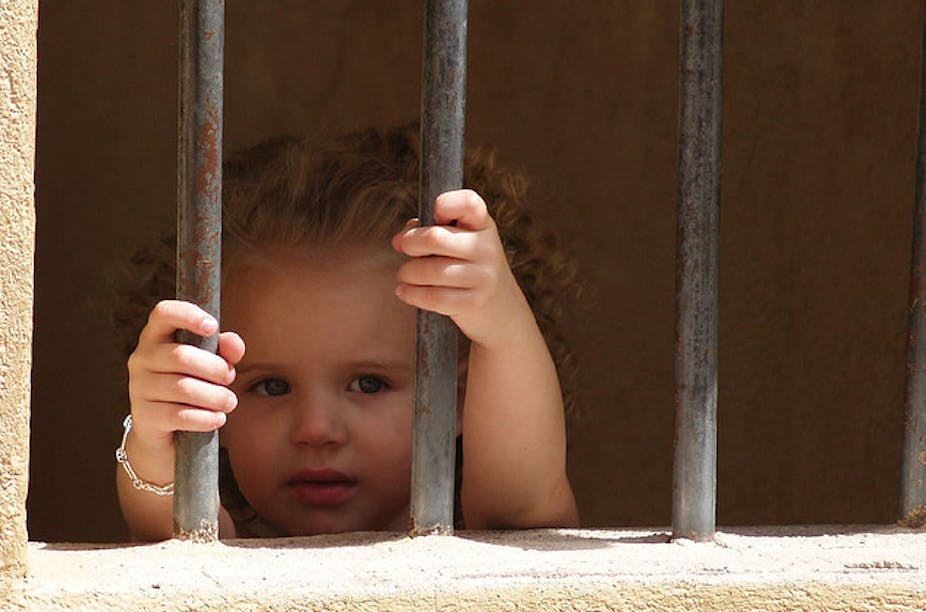The age of criminal responsibility acts as the gateway to the criminal justice system – under a certain age you are kept out.
Most jurisdictions have this age barrier because it’s widely understood children need sheltering from the criminal law consequences of their behaviour until they are developed enough to understand whether their behaviour is wrong.
But what age is the right age? And how do legal systems deal with this difficult question?
What is the age of criminal responsibility?
The United Nations Convention on the Rights of the Child, requires states to set a minimum age “below which children shall be presumed not to have the capacity to infringe penal law”. The convention does not actually indicate what age level should be set as a minimum.
But in fixing a minimum age, the commentary on the United Nation’s Beijing Rules notes that: “The modern approach would be to consider whether a child can live up to the moral and psychological components of criminal responsibility; that is, whether a child … can be held responsible for essentially antisocial behaviour.”
In this regard all Australian criminal jurisdictions have a modern approach, with two age levels of criminal responsibility: a lower one under which a child is always presumed too young to ever be capable of guilt and can, therefore, never be dealt with in criminal proceedings (currently under the age of 10); and a higher one where the presumption that a child is incapable of crime (termed the presumption of doli incapax) is conditional.
Children in the higher age group, between 10 and 14 years old, can be convicted of criminal offences only if the prosecution can refute the presumption of doli incapax. This can be done by proving the child understood that what he or she had done was wrong according to the ordinary standards of reasonable adults. This requires more than a simple understanding that the behaviour was disapproved of by adults.
Changing views
The presumption that children lack capacity is not new. Its roots can be traced back at least to the time of King Edward III. But in recent years many have questioned it, mainly due to the perceived escalation in youth crime and the changes made to the criminal justice system for dealing with the young.
Indeed, criticism was so strong in England and Wales that doli incapax was abolished for 10- to 14-year-olds in 1998, following the outcry over the James Bulger case. This concerned the abduction, torture and killing of three-year-old James Bulger by two ten-year-old boys.
Now in England and Wales, as soon as a child reaches the age of ten, he or she can be convicted of criminal offences without any examination of his or her capacity to understand whether their behaviour is wrong.
This leaves England and Wales with one of the lowest age levels of criminal responsibility in the world and subject to ongoing criticism by the international community.
For example, the former Council of Europe’s Human Rights Commissioner expressed concern, commenting that he had “extreme difficulty in accepting that a child of 12 or 13 can be criminally culpable for his actions, in the same sense as an adult”.
Even England’s closest neighbours, Scotland and the Republic of Ireland, have recently increased the minimum age level to 12.
Criminal example: sexting
The relatively recent phenomenon of “sexting” serves here to show the need for higher age levels. “Sexting” involves the digital recording of sexually explicit images and distribution by mobile phone texts or through social network sites.
Children who engage in this practice run the risk of being prosecuted under child pornography laws and face severe sanctions, including placement on the sex offender register, with all the flow-on consequences that this entails.
It is highly unlikely that even a 14-year-old child who takes a photo of him or herself and consensually sends this to a friend will understand that this behaviour is regarded by adults as wrongful or unlawful.
Nonetheless, as the current law stands there is little to protect children aged 14 and over from a criminal conviction.
Increase the limit, keep it flexible
In Australia, in particular in NSW, many are now calling for an increase in the minimum age level to 12.
But this might not be the great leap forward that it appears to be if it means that the flexible age period (that is, the period where children cannot be prosecuted unless it’s proven they can understand their actions) is abolished. This would take away protection for 12- and 13-year-olds, who may not be mature enough to understand the wrongfulness of their behaviour.
This is the case in Scotland and Ireland, where a child can be convicted of a criminal offence from the age of 12 without an assessment of whether he or she had the capacity to understand the wrongfulness of his or her behaviour.
The advantage of retaining a flexible age period beyond a minimum age, as presently exists in all Australian jurisdictions, is that it recognises that around the age of puberty children develop at vastly different and inconsistent rates.
It allows for the conviction of children who are sufficiently developed to be criminally responsible while protecting those children who are not so developed.
The best outcome would be to raise the minimum age level while retaining and raising the higher flexible age level. This would be a welcome development for children and the justice system in Australia.

